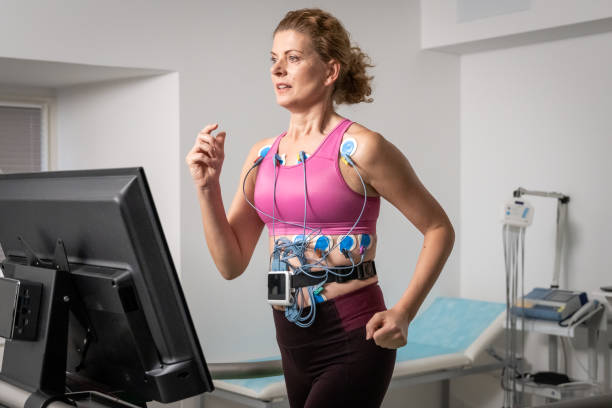Pulmonary function tests (PFTs) are a crucial set of medical examinations used to assess the functioning of the respiratory system. These tests provide valuable insights into lung capacity, airflow, and gas exchange, aiding in diagnosing and managing various respiratory conditions. Whether you’re a healthcare professional, a patient, or simply curious about the intricacies of lung health, understanding pulmonary function tests is essential. In this article, we will delve into the world of PFTs, exploring their significance, types, and the information they can offer.
The Significance of Pulmonary Function Tests
Pulmonary function tests play a pivotal role in evaluating and monitoring respiratory health. They help healthcare providers in:
Diagnosis
PFTs assist in identifying various respiratory conditions, such as asthma, chronic obstructive pulmonary disease (COPD), interstitial lung disease, and pulmonary fibrosis. Doctors can establish a precise diagnosis and tailor treatment plans by assessing lung function.
Disease Severity
PFTs help determine the severity of respiratory diseases, enabling healthcare professionals to gauge the condition’s progression and make informed decisions about treatment adjustments.
Treatment Efficacy
These tests are instrumental in assessing the effectiveness of prescribed treatments, such as bronchodilators or corticosteroids. Changes in lung function following treatment can guide adjustments in medication or therapy.
Preoperative Evaluation
Before chest or lung surgeries, PFTs are used to evaluate a patient’s lung function. This information helps determine the risks associated with anesthesia and surgery. It informs decisions about whether a procedure is safe to perform.
Types of Pulmonary Function Tests
There are several types of PFTs, each focusing on different aspects of lung function:
Spirometry: This is the most common type of PFT and measures lung volume and airflow. It is often used to diagnose and monitor conditions like asthma and COPD.

Lung Volume Tests: These tests measure the total lung capacity, residual volume, and functional residual capacity. They are valuable in diagnosing restrictive lung diseases and assessing the effects of conditions like scoliosis.
Diffusion Capacity Tests: These tests evaluate the ability of the lungs to transfer gases like oxygen and carbon dioxide between the air sacs and the bloodstream. They are essential in diagnosing and monitoring conditions such as pulmonary fibrosis.
Peak Flow Test: This simple test measures the maximum speed at which a person can exhale air and is often used to monitor asthma.
Exercise Stress Test: It assesses lung function during physical activity, helping to diagnose exercise-induced bronchoconstriction or evaluate overall fitness.
What to Expect During Pulmonary Function Testing?
PFTs are generally non-invasive and painless.
Preparation
Patients may be advised to avoid certain medications before the test, particularly bronchodilators, to ensure accurate results. You should also wear comfortable clothing and avoid heavy meals before the test.
Spirometry
This test involves taking a deep breath and blowing as hard as possible into a tube connected to a spirometer. The equipment records various lung volumes and airflow parameters.
Lung Volume Tests
These tests require the patient to breathe in and out of a specialized machine that measures lung volume and capacity.
Diffusion Capacity Tests
Patients inhale a small amount of a test gas (usually a mixture containing carbon monoxide) and then exhale. The equipment measures how well the lungs transfer gasses.
Peak Flow Test
Patients blow into a handheld device called a peak flow meter to measure the force of their exhalation.
Exercise Stress Test
Patients may be asked to walk on a treadmill or use a stationary bike while their lung function is monitored.

Conclusion
Pulmonary function tests are invaluable tools in diagnosing, assessing, and managing respiratory conditions. By providing comprehensive data on lung function, they empower healthcare professionals to deliver more precise and effective care. Whether you’re a healthcare provider or someone concerned about your respiratory health, understanding the significance and types of PFTs is a step toward better respiratory well-being.
FAQs
What can PFTs diagnose?
PFTs can diagnose various respiratory conditions, including asthma, COPD, bronchitis, pulmonary fibrosis, lung infections, and restrictive lung diseases. They are also used to assess overall lung health.
How are PFTs performed?
PFTs involve breathing into specialized equipment that measures lung function. The most common test, spirometry, requires taking a deep breath and forcefully exhaling into a tube connected to a spirometer. Other tests may involve inhaling specific gasses or monitoring lung function during exercise.
Are PFTs painful or uncomfortable?
No, PFTs are generally non-invasive and painless. Patients may experience some discomfort or shortness of breath during the tests, but it is usually well-tolerated.
Can I eat or drink before PFTs?
It’s generally recommended to avoid heavy meals and large amounts of food or drink immediately before PFTs. However, you can typically have a light meal or snack.
Do I need to stop taking medications before PFTs?
In some cases, you may need to avoid bronchodilators or other respiratory medicines for a certain period before the test to ensure accurate results.
What is the best test for pulmonary function?
Spirometry is often considered the best initial test for assessing pulmonary function, as it measures lung volume and airflow, making it versatile for diagnosing and monitoring various respiratory conditions.
What is the normal range of PFT?
The usual range of pulmonary function test (PFT) values varies depending on factors like age, sex, and height.